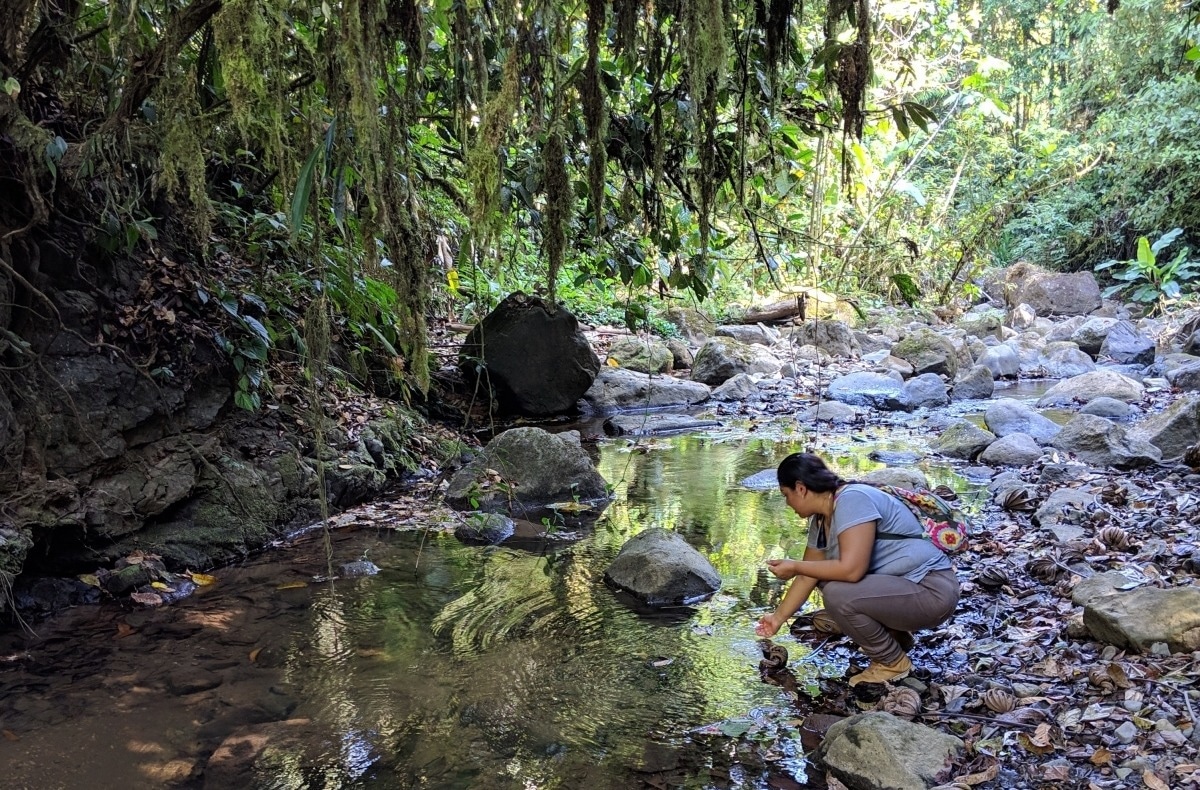Reviewed by Mila PereraSep 13 2022
According to a recent study conducted in Costa Rica by Stanford University, restoring very short stretches of riverfront trees could significantly impact the region’s water quality and carbon storage.
 Costa Rican naturalist and Stanford research collaborator Dunia Villalobos examines a river in Las Cruces, Costa Rica. Image Credit: Rebecca Chaplin-Kramer
Costa Rican naturalist and Stanford research collaborator Dunia Villalobos examines a river in Las Cruces, Costa Rica. Image Credit: Rebecca Chaplin-Kramer
The analysis, which is accessible online and will be printed in the October issue of Ecosystem Services, demonstrates that these buffers are most helpful in steep, erodible, and heavily fertilized landscapes. This may help guide similar initiatives in other nations.
Forests around rivers are key places to target for restoration because they provide huge benefits with very little impediment to productive land. A small investment could have a really big impact on the health of people and ecosystems.
Kelley Langhans, Study Lead Author and PhD Student, Biology, Stanford University
Stanford University was affiliated with the Natural Capital Project.
Unleashing Potential
Vegetated areas adjacent to rivers and streams absorb harmful pollutants in runoff, keeping them out of waterways. The lack of data on the effects of restoring such regions makes it difficult to develop effective strategies to protect these riparian buffers and prioritize where to place them.
The researchers examined one such policy, Costa Rica’s Forest Law 7575, in collaboration with representatives from the Ministry of Environment and Energy, Central Bank, and PRIAS Laboratory.
The rule was passed in 1996 and has been unevenly enforced since then. The law mandates the protection of forested riverfront strips 10 meters (about 33 feet) to 50 meters (about 164 feet) wide.
The group compared a situation in which the rule was strictly enforced with a business-as-usual scenario using InVEST, a free, open-source program developed by the Natural Capital Project. It underestimated the impact of the law’s provisions by simulating the impacts of reforestation in 10-meter-wide strips.
However, their calculations indicated that such a shift would increase sediment retention by roughly 4%, nitrogen retention by more than 81%, and phosphorus retention by about 86%. The increased forest cover, which would grow by around 2% nationally, would also result in a 1.4% rise in carbon sequestration.
The areas below steep slopes with erodible land uses (like pastures), heavy fertilizer application (like intensively cultivated oil palm trees), and poor levels of nutrient retention would benefit from this replanting the most (such as urban areas). Areas of Costa Rica where a significant population is reliant on rivers for drinking water could be greatly impacted by such changes.
When quantifying the benefits of ecosystem restoration, it’s crucial to consider how it affects people, especially the most vulnerable populations. That is why in this research we explicitly mapped out how increases in water quality would reach those who rely on rivers the most.
Kelley Langhans, Study Lead Author and PhD Student, Biology, Stanford University
Even regions with water treatment infrastructure could benefit from this because such infrastructure is especially vulnerable to hurricanes and earthquakes in Costa Rica. Over several days in 2020, 120,000 Costa Ricans lost access to water as a result of a tropical storm and hurricane, which meant that they had to temporarily rely on other water sources, such as streams.
Due to their high solubility, nitrates are particularly prone to leaching into groundwater and are not typically removed by conventional water treatment techniques. Costa Rica, which employs nitrogen-based fertilizers at one of the largest rates in the world, is an area of particular concern.
Farmland and cattle pastures make up most of the land that would need to be reforested to build these buffers. Previous studies have revealed that Costa Rican farmers value the trees on their property and are generally in favor of reforestation, but they believe the upfront costs of making the switch to forests and — on more productive lands — the opportunity costs of giving up agricultural production are too high.
The researchers suggest that more significant monetary incentives, like expanding Costa Rica’s Payments for Ecosystem Services program, and community-based initiatives, may be helpful.
The study is timely for Costa Rica, which is putting its national decarbonization plan into action with the goal of reaching a 60% forest cover.
“Our study provides a model for using realistic, policy-based scenarios to pinpoint areas where forest restoration could have the largest impact in terms of improving people’s health and meeting national adaptation and emissions goals,” said study co-author Rafael Monge Vargas, who is also the director of Costa Rica’s National Geoenvironmental Information Center in the Ministry of Environment and Energy.
Journal Reference
Langhans, K. E., et al. (2022) Modeling multiple ecosystem services and beneficiaries of riparian reforestation in Costa Rica. Ecosystem Services. doi.org/10.1016/j.ecoser.2022.101470.